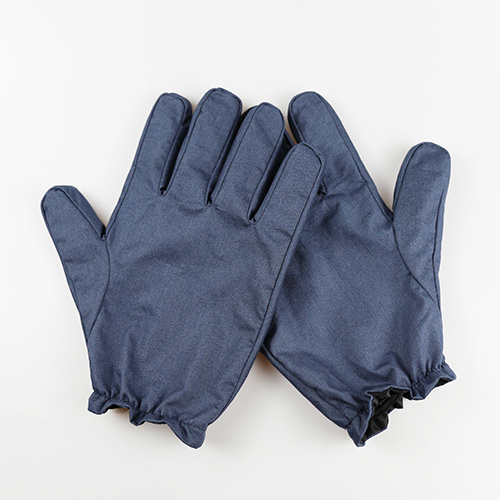Understanding Anti-Radiation Gloves: Essential Insights for Professionals in Functional Textiles
Release Time:
May 17,2025
Anti-radiation gloves are specialized protective gear designed to shield the wearer from harmful electromagnetic radiation. With the increasing prevalence of electronic devices, understanding the relevance of such protective wear is crucial for professionals in the functional textiles sector. These gloves are typically made from specialized fabrics infused with conductive materials that can effect
Anti-radiation gloves are specialized protective gear designed to shield the wearer from harmful electromagnetic radiation. With the increasing prevalence of electronic devices, understanding the relevance of such protective wear is crucial for professionals in the functional textiles sector. These gloves are typically made from specialized fabrics infused with conductive materials that can effectively block or reduce radiation exposure.
One of the primary materials used in anti-radiation gloves is silver fiber, known for its excellent conductivity and ability to reflect electromagnetic waves. Additionally, other materials like copper and various synthetic fibers are often blended to enhance durability and comfort. This combination not only ensures protection but also maintains flexibility and ease of movement, which is essential for professionals who require dexterity in their tasks.
The applications of anti-radiation gloves are diverse, ranging from healthcare settings to industrial environments where exposure to radiation is a concern. In healthcare, for example, these gloves are used by professionals who work with diagnostic equipment, ensuring their safety from potentially harmful electromagnetic fields. In industrial contexts, workers involved in electronics manufacturing may also benefit from wearing these gloves, as they are often exposed to various forms of radiation from equipment.
When selecting anti-radiation gloves, several factors should be considered. First, the level of protection offered by the gloves, which is usually indicated by industry standards, should align with the specific exposure risks faced in a given profession. Additionally, comfort and fit are vital; gloves that are too tight or too loose can hinder performance and lead to safety hazards. Moreover, it is important to consider the gloves' durability, especially in environments where wear and tear are common.
Incorporating anti-radiation gloves into workplace safety protocols can significantly reduce health risks associated with prolonged exposure to radiation. By prioritizing protective gear, companies not only safeguard their employees but also foster a culture of health and safety that can enhance productivity and morale.
In summary, anti-radiation gloves represent a crucial component of protective equipment for various industries, especially within the functional textiles sector. By understanding their benefits, applications, and selection criteria, professionals can make better-informed choices that enhance safety and efficiency in their work environments. As technology continues to advance, staying informed about protective measures like anti-radiation gloves will remain essential for industry leaders.
One of the primary materials used in anti-radiation gloves is silver fiber, known for its excellent conductivity and ability to reflect electromagnetic waves. Additionally, other materials like copper and various synthetic fibers are often blended to enhance durability and comfort. This combination not only ensures protection but also maintains flexibility and ease of movement, which is essential for professionals who require dexterity in their tasks.
The applications of anti-radiation gloves are diverse, ranging from healthcare settings to industrial environments where exposure to radiation is a concern. In healthcare, for example, these gloves are used by professionals who work with diagnostic equipment, ensuring their safety from potentially harmful electromagnetic fields. In industrial contexts, workers involved in electronics manufacturing may also benefit from wearing these gloves, as they are often exposed to various forms of radiation from equipment.
When selecting anti-radiation gloves, several factors should be considered. First, the level of protection offered by the gloves, which is usually indicated by industry standards, should align with the specific exposure risks faced in a given profession. Additionally, comfort and fit are vital; gloves that are too tight or too loose can hinder performance and lead to safety hazards. Moreover, it is important to consider the gloves' durability, especially in environments where wear and tear are common.
Incorporating anti-radiation gloves into workplace safety protocols can significantly reduce health risks associated with prolonged exposure to radiation. By prioritizing protective gear, companies not only safeguard their employees but also foster a culture of health and safety that can enhance productivity and morale.
In summary, anti-radiation gloves represent a crucial component of protective equipment for various industries, especially within the functional textiles sector. By understanding their benefits, applications, and selection criteria, professionals can make better-informed choices that enhance safety and efficiency in their work environments. As technology continues to advance, staying informed about protective measures like anti-radiation gloves will remain essential for industry leaders.






